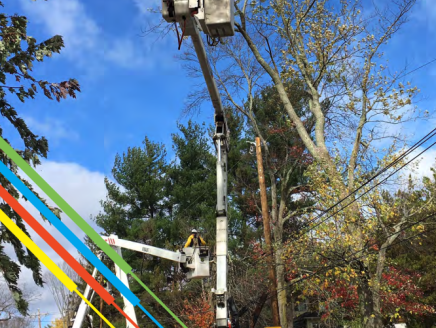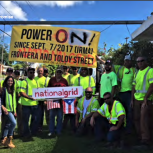The Clean Energy Promise eBook: Extreme Weather’s Less-than-Extreme Solutions
Let’s suppose, for argument’s sake, you question whether climate change is real, or whether it will really affect you.
You’re not alone.
More than a third of Americans say they don’t worry much or at all about global warming and a third say it’s exaggerated in the news. More than half say it won’t pose a serious threat in their lifetimes, and 12 percent say it will never be a threat.
Still, amid the devastation left by Hurricane Florence and past hurricanes, extreme weather is a little tougher to question or ignore. Extreme weather has its origins, of course, in extreme temperatures. The four hottest years globally on record? That would be the last four, in this order: 2016, 2017, 2015, and 2018.
Water levels have also been rising along our coasts, and we can expect a four-foot increase by the end of the century if we don’t phase out excessive use of fossil fuels by 2020. That means at high tide, with a stiff wind blowing into shore, you’ll be able to swim to your home.
Don’t worry, you won’t be alone. Not with 30 percent of the US population living and working in communities within 50 miles of
the coast. Why do so many Americans believe climate change won’t affect them personally? It is conceivable they didn’t know any
of the millions of Americans touched by the record number of hurricanes — and record intensities — in recent years: Katrina, Sandy, Irma, Harvey, José, and Maria, to name but a few. Or the four back-to-back nor’easters that hit New England in spring 2018.
Or the destructive heat waves, floods, tornadoes, and wild fires that have run roughshod across North America in the first part
of this century.
The National Oceanic and Atmospheric Administration reported the 2018 hurricane season produced 15 named storms, including eight hurricanes of which two were killer Category 3 to 5 hurricanes. Whether we believe extreme weather events are the result of climate change or not, we have opportunities to improve how we cope with them.
We need to better prepare for the predictably “unexpected,” adapting and creating more resilient communities in the face of catastrophic weather. We also need to recognize that energy infrastructure is fundamental to disaster preparedness and enduring economic health and safety. (Note the devastating effects of Hurricane Maria on Puerto Rico in 2017.) Finally, we need to continue the transition to clean energy infrastructure that’s already under way.
Read the rest of the Extreme Weather’s Less-than-Extreme Solutions chapter from National Grid’s eBook The Clean Energy Promise
About the Author
Dean Seavers joined National Grid in 2014 as U.S. President. Dean’s career as a value creator has included leadership roles at GE, United Technologies, and Tyco. He led GE Security, a $2 billion product and technology group, and he also led a $4 billion global services portfolio for United Technologies. Dean was a founding partner of Red Hawk Fire & Security and led its emergence as the second largest independent fire and security platform in the U.S.
Dean is a strategic leader with a background in team building, performance improvement, and operational leadership. At National Grid, his focus is on continuing the performance progress that underpins the company’s $7 billion business in the U.S. while driving its clean energy transition agenda of building the advanced natural gas and electricity networks that are necessary for our 21st century digital economy.
A native of Sandusky, Ohio, Dean graduated summa cum laude with a bachelor’s degree in business from Kent State University and earned an MBA from Stanford University’s Graduate School of Business














